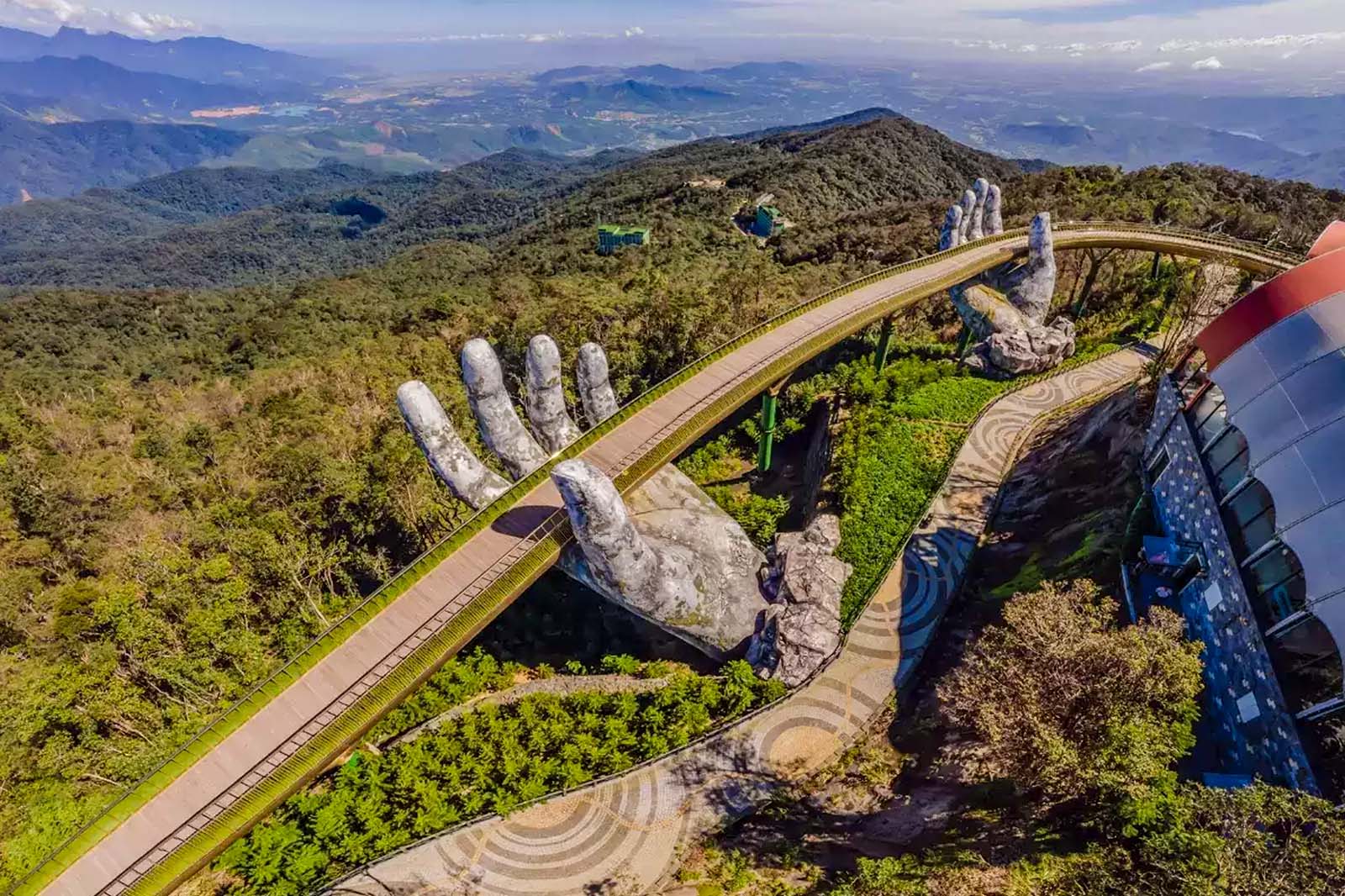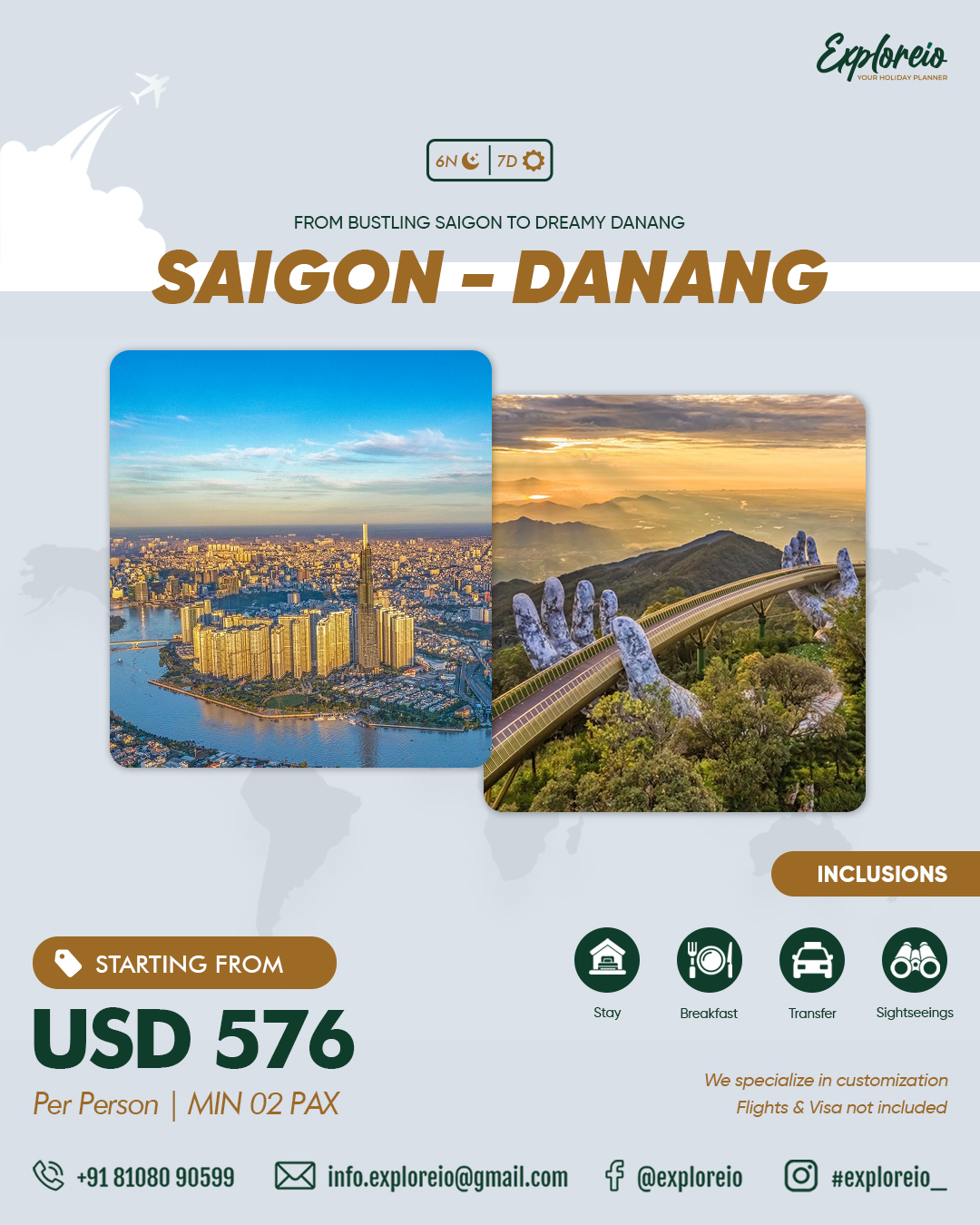Vietnam
- Home
- International Destinations
- Vietnam
Vietnam Unveiled
When to go ?
Vietnam’s climate varies from north to south, providing a wide range of travel options throughout the year. The ideal time to visit is during the dry season, which spans from November to April. However, keep in mind that this period is divided by the Lunar New Year (Tet), a major Vietnamese holiday that can impact travel plans. The shoulder months of April and May, as well as September and October, offer pleasant weather and fewer crowds.
How to get there ?
Traveling to Vietnam is convenient with its well-connected international airports in major cities like Hanoi, Ho Chi Minh City, and Da Nang. Depending on your point of entry, you can explore the country by train, bus, domestic flight, or a combination of these options. The well-maintained road networks make intercity travel relatively easy.
Must Visit Places
Hanoi: The capital city is a vibrant blend of ancient charm and modernity. Explore the Old Quarter’s narrow streets, visit the Ho Chi Minh Mausoleum, and indulge in local street food.
Ha Long Bay: A UNESCO World Heritage Site, this stunning seascape of limestone islands and emerald waters is best explored on a cruise. Kayaking, swimming, and cave exploration are popular activities.
Hoi An: This quaint town boasts preserved architecture, lantern-lit streets, and a vibrant riverside market. Don’t miss the chance to have custom-made clothing tailored by skilled local artisans.
Hue: Immerse yourself in Vietnam’s imperial history by visiting the ancient citadel and royal tombs. The Perfume River adds a serene touch to this cultural gem.
Ho Chi Minh City (Saigon): Experience the energetic pulse of Vietnam’s largest city. The War Remnants Museum and Cu Chi Tunnels offer insights into the country’s wartime history.
Vung Tau: Situated on a peninsula in Southern Vietnam, Vung Tau is known for its beautiful beaches, scenic coastline, and colonial architecture. Visitors can explore the city’s historical sites, relax on the beaches, and enjoy fresh seafood at the local restaurants. The city also offers panoramic views from its lighthouse and the statue of Jesus Christ atop Núi Nhỏ Mountain.
Danang: Located in central Vietnam, Danang is a coastal city known for its sandy beaches, rich history, and vibrant culture. The city is famous for its Marble Mountains, which are a cluster of five marble and limestone hills offering caves, tunnels, and panoramic views of the surrounding area. Danang is also a gateway to the ancient town of Hoi An and the imperial city of Hue, making it an ideal base for exploring the cultural heritage of Vietnam.
Unforgettable Experiences
Culinary Delights: Sample pho (noodle soup), banh mi (sandwich), and fresh spring rolls from street vendors. Participate in a cooking class to learn the art of Vietnamese cuisine.
Cultural Immersion: Engage with hill tribes in Sapa, witness water puppetry performances, and partake in traditional festivals for a deeper understanding of Vietnamese culture.
Outdoor Adventures: Trek through the terraced rice fields of Sapa, go motorbiking in the Central Highlands, and trek to the remote villages in Northern Vietnam.
Beach Bliss: Relax on the pristine beaches of Phu Quoc, Nha Trang, and Da Nang, and enjoy water sports such as snorkeling, scuba diving, and kite surfing.
Local Markets: Dive into the lively markets for a glimpse of daily life and to shop for handicrafts, textiles, and local products.
Mekong Delta: Explore the intricate waterways, floating markets, and lush landscapes of the “Rice Bowl” of Vietnam.
Halong Bay Cruise: A UNESCO World Heritage Site, Halong Bay is known for its emerald waters and thousands of towering limestone islands topped with rainforests. A cruise through this natural wonder offers breathtaking views and the opportunity to explore hidden caves, grottoes, and floating villages.
Cu Chi Tunnels: Located near Ho Chi Minh City (Saigon), the Cu Chi Tunnels are a vast network of underground tunnels used by the Viet Cong during the Vietnam War. Visitors can explore a portion of these tunnels, learn about the history of the site, and gain insight into the resilience and ingenuity of the Vietnamese people during wartime.
Do's and Dont's
Do’s
Do respect all Buddha images: Buddha images are held sacred and sacrilegious acts are punishable by imprisonment even if committed by foreign visitors.
Do eat with a spoon: Use the fork to load food on to the spoon.
Do lower your body slightly when passing between or in front of people.
Do remove your shoes before entering a temple, somebody’s house and even some shops.
Dont’s
Don’t cross your legs: When you’re in the presence of a monk, don’t cross your legs. Whether you’re sitting on the floor or in a chair, this applies.
Don’t touch a Thai woman without consent. Despite the image portrayed in some bars and clubs, the majority of Thai women are conservative.
Don’t place your feet on the table while sitting, don’t point to anything with your feet and don’t touch anybody with your feet.
Don’t ruffle a Thai person’s hair or touch their head. If you accidently touch someone’s head, please apologise.
Indian Restaurants in Vietnam
- Gujarat Indian Restaurant (Indian)
- Namaste India Restaurant (Veg)
- Makhan Bhog Indian Restaurant (Pure Veg)
- Benaras Heights (Veg)
- Dalcheeni HCMC (Veg)
Vietnam’s allure lies in its diverse landscapes, captivating history, and welcoming locals. Whether you’re drawn to bustling cities, serene countryside, or idyllic beaches, Vietnam promises an unforgettable journey that will leave you with lasting memories of its beauty and culture.









